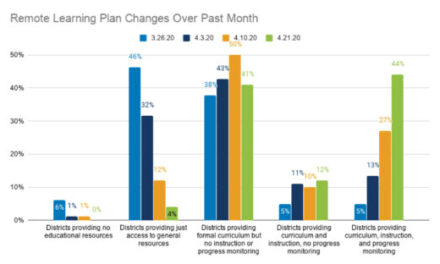Career Confidential is on vacation for the summer. This column originally ran in February 2021.
Q: I teach 3rd grade, and even in the best of times, kids this age are easily discouraged. But right now, my students are experiencing so much change and loss, and I’m struggling with how frequently they seem to be expressing disappointment, either verbally or through their behavior. I feel for them and want to help them. I’m also anticipating more of the same next year. These eight- and nine-year-old kids can’t manage little setbacks well, whether it’s a tough worksheet problem or a missed chance to be line leader, and I think it’s because they’re also coping with big disappointments. If I say we don’t have time for a read-aloud or virtual buddy time, one of them might complain that “Everything is boring!” or “I’m sick of this.” Or if I reshuffle the class groupings, they might become totally deflated and complain that they have no friends in their new half group. And that may very well be true! Also, many kids really hate the Zoom part of our hybrid program and will be sullen throughout an entire online lesson, or they may blurt out that their parent made them log on.
This lack of resilience seems much more pronounced than in previous years, and there’s a real heaviness that permeates everything. I can remember seeing some of these same students running around outside when they were 2nd graders, and there’s no question they’re different now. I want to help them reclaim their lighter, pre-pandemic spirit. That seems more important right now than teaching math facts, though I’m obviously hoping to do both. I know I can’t fix the pandemic for them, and hopefully all of this won’t drag on too much longer, but what can I do to help my students now — and also the students I’ll have next year? I suspect these little guys will be reeling for quite a while, and I want to equip them to come out on the other side better able to roll with the punches.
A: The pandemic has had a huge impact on children, changing how they learn, live, and play. And no two kids are going to respond exactly the same way, because everyone has a different backstory and risk factors. That includes the amount of stress they’re getting exposed to overall, the number of previous traumas they’ve experienced, genetics, developmental factors, and the strength of their support system.
As their teacher, you’re a critical part of that support system, and while it might seem overwhelming, there’s a lot you can do to bolster their resilience. I raised your question with Jonathan Wilson, the director of OpSAFE international, an organization that provides care for children who have suffered trauma from natural and man-made disasters. He reminded me of the 80/20 rule: “Typically, after a disaster, around 80% of kids will be just fine and recover well, and around 20% will struggle,” he explained. “But if you just work with the 20%, addressing their needs as they start presenting problems, then you end up playing whack-a-mole, jumping from crisis to crisis. It’s better to work with the 100% to rebuild community, talk about feelings, and reduce distress. Then the whole group helps you support the 20% and everybody builds resilience.”
With that in mind, focus on establishing a sense of belonging for everybody in your classroom, rather than just tending to the kids who seem to be struggling. Encourage kids to share their feelings with you and with one another, underscoring the importance of taking turns and listening respectfully. Allow time and space for them to rebuild what they’ve lost, incorporating plenty of time for imaginative play and unstructured outdoor play. Teach them problem-solving skills, too.
I spoke also with Dr. Ryan DeLapp, a child psychologist with the Montefiore Health System in New York. It’s important to help children anticipate stressful situations before they happen, he said, and to guide them in thinking about possible ways to respond. For example, if one of your students is upset that their best friend will be in a different cohort, you could help them come up with ways to soften the disappointment. Perhaps they could schedule a regular after-school playdate with that friend, for example, or identify someone in their new cohort that they want to get to know better. It’s also helpful to ask kids to identify something positive about having to turn to a back-up solution, he adds.
You can teach these problem-solving skills explicitly, practice them with your students, and then praise your students whenever they use these skills on their own, exhibiting flexibility in the face of disappointment. Above all, take your cues from them. When you see that students’ emotions are spilling over, or that they’re worn out, or that their behavior is disintegrating, it’s important to set academics aside and assess what they need, whether it’s quiet reading time, a mindful minute, or time to play.
For more Career Confidential: http://bit.ly/2C1WQmw
Have a question that you’d like Career Confidential to answer? Email contactphyllisfagell@gmail.com. All names and schools will remain confidential. No identifying information will be included in the published questions and answers.
ABOUT THE AUTHOR

Phyllis L. Fagell
Phyllis L. Fagell is the school counselor at Landon School in Washington, D.C., a therapist at the Chrysalis Group in Bethesda, Md., and the author of the Career Confidential blog. She is also the author of Middle School Matters and Middle School Superpowers, available at https://amzn.to/3Pw0pcu.









